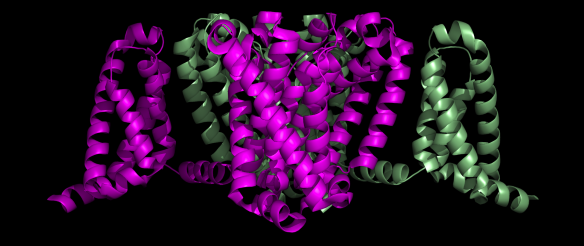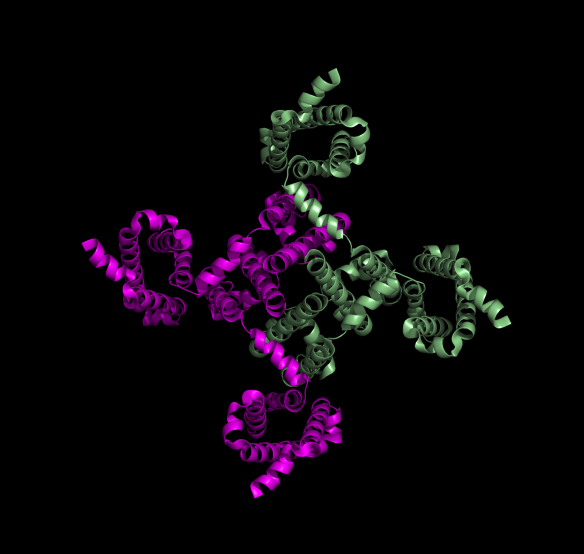Ion Channels and Chronic Pain – Structure of the Voltage-Gated Sodium Channel
What is it?
We have all felt pain when we cut our finger, or burn ourselves. This 'feeling' comes from the action of sodium channels sitting in the membranes of our nerves. Voltage-gated sodium channels (Nav) are essentially the electrical impulses that transmit signals throughout our nervous system.
Pain is not always a bad thing in the body. It can act as a warning signal – reminding us to move our hand away from the fire to prevent further damage to our body. But for some people, the pain never goes away. This type of pain is termed chronic pain. For these sufferers, currently available painkillers can become ineffective, leaving them with few options to manage their pain.
When we have a local anaesthetic, our sodium channels are being blocked. Because of their role in pain transmission, sodium channels are being investigated for new analgesic drug development. That is, scientists aim to develop new powerful painkillers that lack the addiction and drowsiness side effects, but give relief to sufferers.
Humans have nine different sodium channels. The Nav1.7 sodium channel is the one that plays a key role in pain transmission. This was identified when researchers found that people with mutations in the Nav1.7 sodium channel did not feel pain (termed congenital indifference to pain).
The structure of a sodium channel in humans has not yet been determined, but we have gained information from the structure of a bacterial sodium selective channel.
What does it look like?
The bacterial sodium channel shown below is less complex than the human channel. But the structure does give us some information as to how drugs (anaesthetics and toxins) bind to the channel.
This is a side view of the bacterial sodium channel that sits in the membrane of the nerve cell:

This is a view from the bottom of the channel, showing the 'central pore' that sodium ions can move through:

Image generated by Pymol (http://www.pymol.org/) using the coordinates from the protein data bank (accession code: 3RVY) (http://www.rcsb.org/pdb/explore/explore.do?structureId=3RVY)
How do we use this structure to find more effective pain treatments?
Researchers are investigating toxins from venomous animals (snakes, spiders and cone shells) and plants as a source of painkilling molecules. This is because venoms have evolved over millions of years to target sodium channels – as this is the fastest way to incapacitate their prey.
Researchers from Australia (University of Queensland's Institute for Molecular Bioscience) have found a number of new molecules that are potential analgesics from these venoms. For example, they have found that a venom used by a centipede to paralyse prey contains a molecule more effective than morphine in blocking pain. This molecule is selective for Nav1.7 over the eight other channels. This selectivity is key – otherwise, we will get side effects because the other channels play important roles in heart and muscle function.
Where did the structure come from?
The crystal structure of a voltage-gated sodium channel from Arcobacter butzleri in its 'closed' conformation with four activated voltage sensors was determined to 2.7Å resolution and published in Nature in 2011.
How does the channel open and close?
In 2012, the structure of an 'open' bacterial form of the sodium channel was solved providing insight into how the channel opens and closes. For a movie of this see: http://www.nature.com/ncomms/journal/v3/n10/extref/ncomms2077-s3.mpg
In the next post, we will discuss some more about these toxins as potential analgesics.






